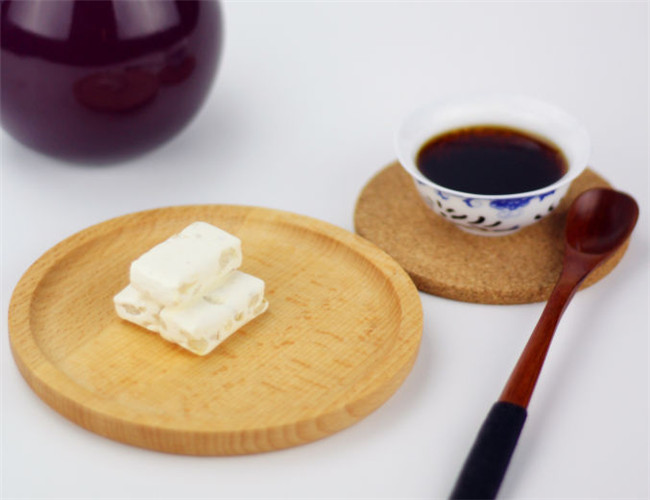Shaoxing strives to rejuvenate rice wine's aging spirit
 |
|
Wu's tasty rice wine infused nougat sits elegantly beside a cup of sweet rice wine. [Photo by Richard Whiddington/chinadaily.com.cn] |
Qiu believes developing C2B avenues is more than a popularity gimmick. The flexible production model significantly reduces inventory and waste problems and thereby increase profits.
However, a full-bodied turn to modernity and the internet won't necessarily uncork the industry's future profits. After all, its chief commodity spends a lifetime inside storehouses- sometimes purchased a generation in advance by patrons who won't ever sniff their investment. In short, it faces the paradox of needing to seem both culturally ancient and fashionably modern.
This is the impression one has while exploring Shaoxing Rice Wine Group's Central Wine Cellar, a storehouse 20 minutes' drive from downtown Shaoxing. The surroundings shift suddenly from cobwebbed rows of rice wine containers to plush tastefully lit rooms with the latest audiovisual displays.
Mr. Jin, a tour guide who has worked at the facility for over 30 years, proudly introduces guests to one of the company's most recent product developments; customization. Customers can have patterns, names, or messages carved on a rice wine container by the company's in-house artist. Although more following the vein of traditional B2C models, the new feature certainly offers a greater sense of individuality.
Contrary to the tweaking adjustments of rice wine companies are the drastic innovative ideas of individuals like Wu Hui, a local who has grown a rice wine-based products business since 2012.
"Young people have a mind for seeking novelty, this is what we want to do when we develop products."
Milk tea, chocolate, nougat, ice cream, custard, pudding- name a sugary treat and chances are Wu has already infused it with rice wine, artfully packaged it, and sells it at his two downtown stores.
The product he is most proud of is the milk tea concoction, a warm drink bottomed with grains of rice discarded during the rice wine fermentation process. The drink has a rum raisin taste and the rice adds a pleasing texture and slight sweetness.
"We keep the unique taste of rice wine and the sweetness of milk tea at the same time," Wu says.
In perhaps the ultimate compliment, major rice wine companies have begun mimicking some of Wu's products with rice wine popsicles and milk teas available at The China Yellow Rice-Wine Museum. However, in crucial ways they are following fumes rather than making the brew.
Without a traditional factory and by building a thriving online platform, Wu stands at the vanguard of rice wine's image shift. His asset-light, flexible business model is implausible for the industry's big players, but, if he can successfully continue his mission of novelty and creativity, he'll help them prove Shaoxing rice wine is so much more than an old man's favorite nightcap.
Sun Hui contributed to this story.
















